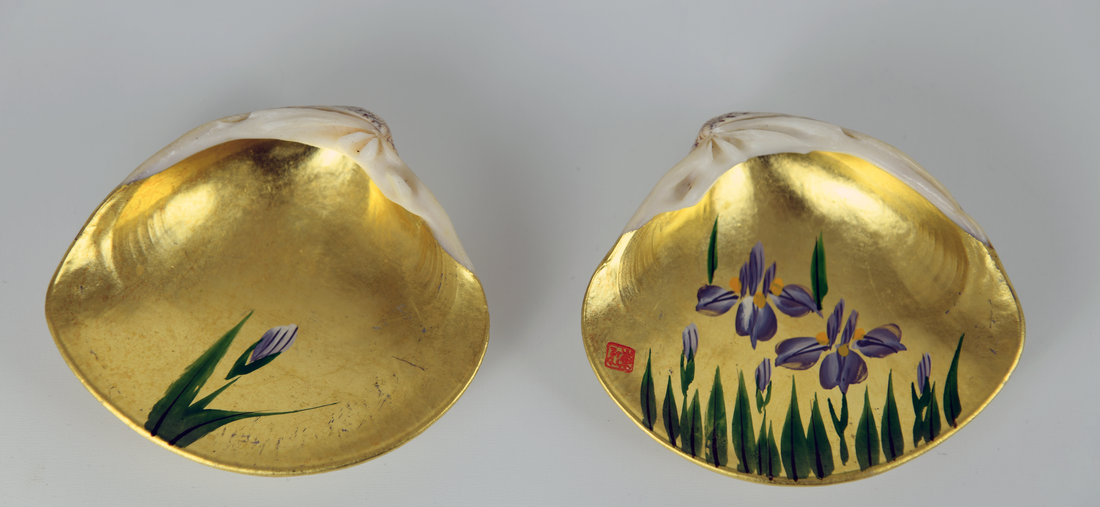
Delving into the Textile Design of a Late 19th Century Dress in Our Collection
At first glance this c.1890 dress in our collection may not transport one’s imagination to the ‘Land of the Rising Sun’, especially as this piece was sourced from a third generation home in St. Louis (USA). The dress, fashioned in printed fine wool twill, has a beautiful trompe-l'œil jacket detail, with mahogany brown silk velvet cuffs, stiffened collar, waistband and lapels with a rich brown silk front. It is the print which has an undeniable connection to Japan, more specifically a traditional game popular in the 9th century called ‘kaiawase’ 貝合わせ. The name of the game roughly translates to ‘matching shells’, hinting at the aim of the game which is to match each clam shell to its corresponding pair. The shells were exquisitely polished, gilded and lacquered with designs that ranged from seasonal depictions of flora and fauna to literary or poetic scenes. Because these shells only fit together in pairs, they were associated with matrimonial harmony and having a set of kaiawase was an important part of a bride’s trousseau.

The painted golden pair in our collection depict Iris flowers budding and blooming. The shell print found in the c.1890 century dress can be found in Japanese women’s clothing and is a particularly fitting motif to wear around ‘Hinamatsuri’ 雛祭り (Girls' Day), in early March. Two versions of the shell motif featured in our green haori are represented in the colourful ‘yūzen’ 友禅染 dye technique and in the figured ‘rinzu’ 綸子 silk background weave.

These textile patterns, although inspired by the same object, have been adapted to suit the content and techniques they were made from, the cut and construction of the dress and the haori respectively, as well as reflecting the different contexts they inhabited.
Text by Irene D’Antonio
